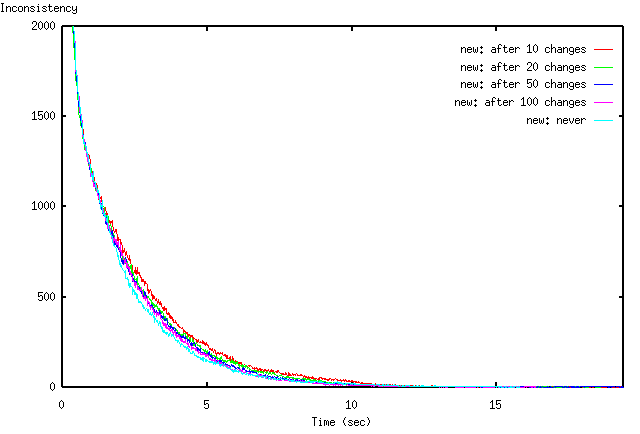
| EXCALIBUR Adaptive Constraint-Based Agents in Artificial Environments |
| [EXTENSION] | [More Knowledge] [Aggressive Heuristics] |
| [ Please note: The project has been discontinued as of May 31, 2005 and is superseded by the projects of the ii Labs. There won't be further updates to these pages. ] |
(Related publications: [PUBLink] [PUBLink])
The task constraint can also be extended. The current heuristic is very cautious, changing just one variable. After a couple of changes of task positions within a job, it may be useful to make a complete revision of the internal distance relations instead of repairing only one relation. A more aggressive heuristic can add to the former heuristic a recursive repair of all relations of the constraint whose inconsistency has been changed by the improvement (considering only variables that have not already been changed within the improvement step).
The effect is disappointing (figure below; using only the old ARC-H1 heuristic for the ARCs). Even a slight deterioration in the results is caused by activating the task constraint's new heuristic.

Cautious heuristics are often more appropriate than highly aggressive ones, the synthesis with other problem aspects being promoted by only slight changes of multi-constraint variables.
| [EXTENSION] | [More Knowledge] [Aggressive Heuristics] |
For questions, comments or suggestions, please contact us.
Last update:
May 19, 2001 by Alexander Nareyek